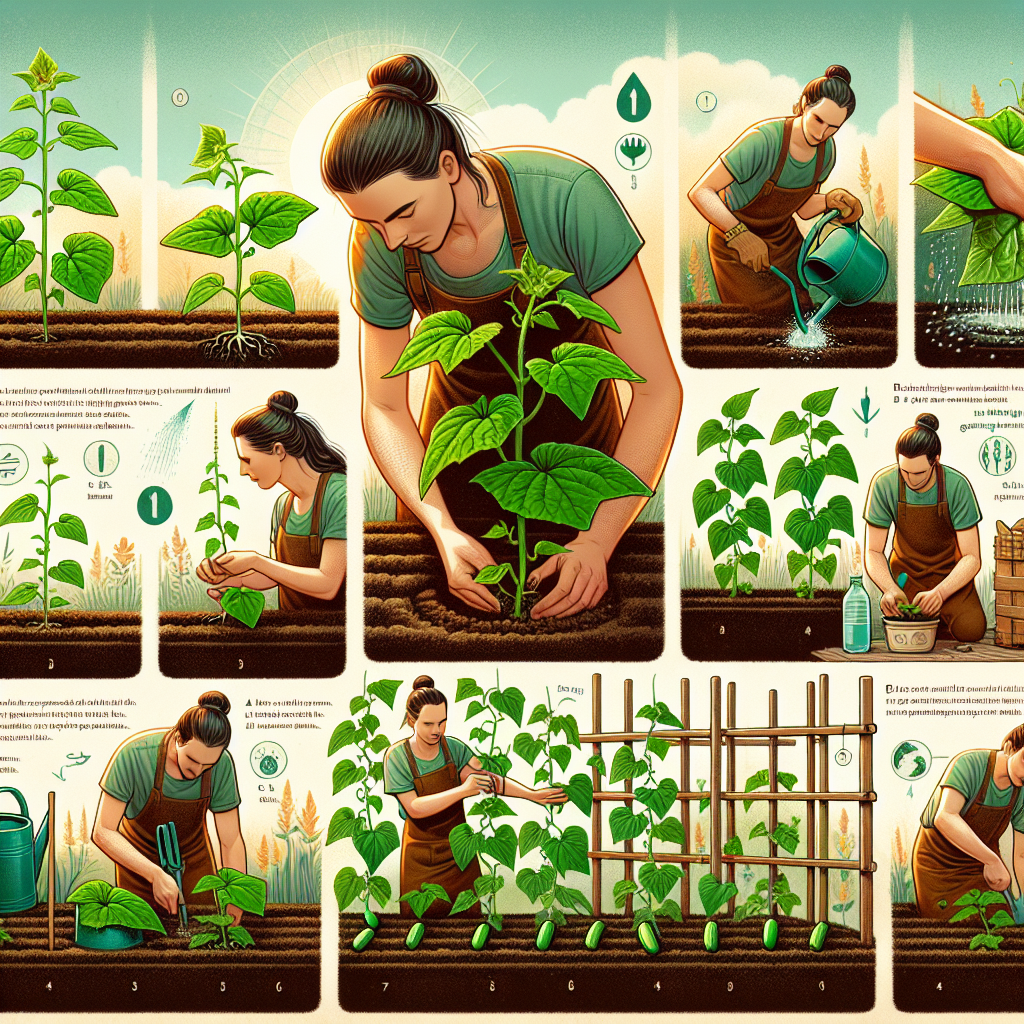
How to care for cucumber plants in the garden
Introduction to Caring for Cucumber Plants
If you’re an avid gardener or just starting out, growing cucumbers can be a rewarding experience. These crisp, refreshing vegetables are perfect for salads, pickling, or enjoying fresh from the vine. However, how to care for cucumber plants in the garden effectively is crucial for a bountiful harvest. In this article, we’ll explore the essential aspects of cucumber plant care, from planting to pest management, ensuring you your plants thrive throughout the growing season.
Choosing the Right Location
Cucumbers thrive in warm weather with plenty of sunlight. Selecting the right location in your garden is the first step in their care.
Sunlight Requirements
- Cucumbers need at least 6-8 hours of direct sunlight daily.
- Choose a south-facing location for optimal growth.
Soil Conditions
The soil for cucumber plants should be well-draining and rich in organic matter. A pH level between 6.0 and 7.0 is ideal for nutrient uptake.
- Test your soil pH and amend accordingly with lime (to increase pH) or sulfur (to decrease pH).
- Incorporate compost or well-rotted manure to enrich the soil.
Planting Cucumbers
Once you have chosen the right location, it’s time to plant your cucumber seeds or seedlings.
When to Plant
Plant cucumbers after the last frost when the soil temperature reaches about 70°F (21°C).
Planting Methods
- Direct Seeding: Sow seeds 1 inch deep and 36-42 inches apart if you plan to train your cucumbers on a trellis.
- Transplanting: Start seeds indoors 2-4 weeks before the last frost and transplant them carefully outdoors, ensuring no transplant shock.
Watering Cucumber Plants
Watering is a critical element in how to care for cucumber plants in the garden. Cucumbers are about 95% water and need consistent moisture to develop properly.
Watering Techniques
- Water deeply at the base of the plant to promote deep roots.
- Avoid overhead watering to minimize the risk of disease.
Frequency of Watering
Depending on your climate and soil type, cucumbers typically need about 1-2 inches of water per week. Adjust according to rainfall and soil moisture levels.
Nutrients and Fertilization
Cucumbers are heavy feeders, meaning they require ample nutrients available in the soil. Here’s how to keep them well-fed.
Types of Fertilizers
- Organic Fertilizers: Compost, well-rotted manure, or fish emulsion.
- Chemical Fertilizers: A balanced NPK fertilizer or one higher in potassium (K) for fruit development.
Application Timing
- Apply a slow-release fertilizer at planting time.
- Side-dress with additional fertilizer every 4-6 weeks during the growing season.
Pest and Disease Management
Cucumber plants are susceptible to various pests and diseases that can hinder their growth. Understanding the common threats will help in managing them.
Common Pests
- Cucumber Beetles: Small yellow and black striped beetles that feed on leaves and transmit bacteria.
- Aphids: Small green insects that suck sap, weakening plants.
Controls for Pests
Natural methods for controlling pests include:
- Introduce beneficial insects like ladybugs.
- Use insecticidal soaps or neem oil as a preventive measure.
Disease Prevention
Common diseases include downy mildew and powdery mildew. Here are some tips to prevent these:
- Practice crop rotation to avoid soil-borne diseases.
- Ensure good air circulation around plants by proper spacing and pruning.
- Water early in the day to allow foliage to dry quickly.
Harvesting Cucumbers
Knowing when and how to harvest cucumbers is crucial for the best flavor and quality.
Optimal Harvest Time
Cucumbers can be harvested when they reach about 6-8 inches long, usually 50-70 days after planting, depending on the variety. Regular harvesting encourages more production.
How to Harvest
- Gently twist or cut the fruit off the vine, taking care not to damage the plant.
- Use pruning shears to avoid injury to the plant and to harvest more mature cucumbers.
Conclusion
Growing cucumbers can be incredibly gratifying when you know the proper steps to ensure their health. By understanding how to care for cucumber plants in the garden, including proper planting, watering, and pest management, you’ll be well on your way to a successful harvest. Take your time to follow these guidelines and enjoy the fruits of your labor—crisp, sweet cucumbers that you grew with your own hands!
By Guest, Published on August 16th, 2024